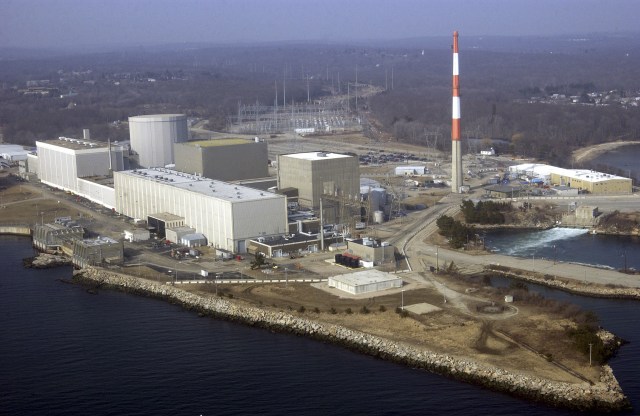There is currently a political struggle unfolding over the expansion of a data center in East Connecticut, a move that could position the state to meet the increasing demands of artificial intelligence for computational power while providing substantial financial benefits to state and local governments, totaling $1 billion or more in payments.
The division between Gov. Ned Lamont’s commissioners and some members of the Senate stems from concerns raised about a pioneering agreement that enables the establishment of a power-intensive, large-scale data center in a region known for having some of the highest energy costs in the country.
To power and manage tens of thousands of computer servers, the developers have orchestrated a direct connection to two nuclear-powered generators operated by Dominion Energy at Millstone Point in Waterford. However, skeptics fear that the data center’s substantial power consumption—potentially amounting to 13% of the Millstone output—could lead to increased consumer electricity rates or even compromise the reliability of the regional electricity supply.
Thomas Quinn, the president of NE Edge, the developer behind the data center project, dismisses these concerns as unfounded. He points to forecasts provided by the operator of the New England electric grid, indicating that there will be surplus generated electricity to support the center in the upcoming years. Moreover, Quinn asserts that the millions of dollars committed to the state annually over the next three decades could potentially reduce electric rates.
Despite Quinn’s assurances, there is a clear divide within the Lamont administration. While Economic and Community Development Commissioner Dan O’Keefe and various stakeholders support the project, including the town of Waterford, Dominion Energy, and several business and labor organizations, Katie Dykes, the commissioner of the state Department of Energy and Environmental Protection, reportedly opposes the initiative and endorses a legislative bill calling for a study that could delay its progress.
In response to the conflicting views, Lamont’s spokesperson emphasized the importance of data centers in the digital era and the potential job opportunities they bring. The governor remains open to input from legislators on sourcing clean energy to meet the escalating demands of modern technology.
The proposal put forth by NE Edge aims to establish a data center on a scale that sets it apart from conventional facilities, with a focus on high-performance compute AI capabilities. The project’s viability hinges on the cost of electricity and a unique agreement with Dominion that allows direct access to the Millstone generators, bypassing the costly transmission infrastructure managed by Eversource and regulated by the state.
By leveraging this arrangement, NE Edge can negotiate a more favorable power purchase agreement with Dominion, offering rates lower than those paid by Connecticut utility customers. This approach not only enhances cost-effectiveness but also promotes environmental sustainability by avoiding carbon-based electricity generation.
NE Edge’s comprehensive plan includes significant investments in infrastructure, servers, and sustainable power backup systems. The data center’s design prioritizes noise reduction and visual aesthetics to minimize its impact on the surrounding environment.
Furthermore, the project entails substantial financial contributions to the state and local communities, including host fees, tax incentives, and support for energy assistance programs. NE Edge’s commitment to storing the state’s data in a fossil-free environment underscores its dedication to innovative and sustainable practices.
As the debate unfolds at various levels of government and regulatory bodies, the future of the data center project remains uncertain. Stakeholders continue to assess the potential benefits and risks associated with this groundbreaking initiative, highlighting the complex interplay between technological advancement, energy infrastructure, and environmental stewardship in the digital age.










